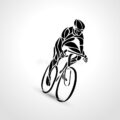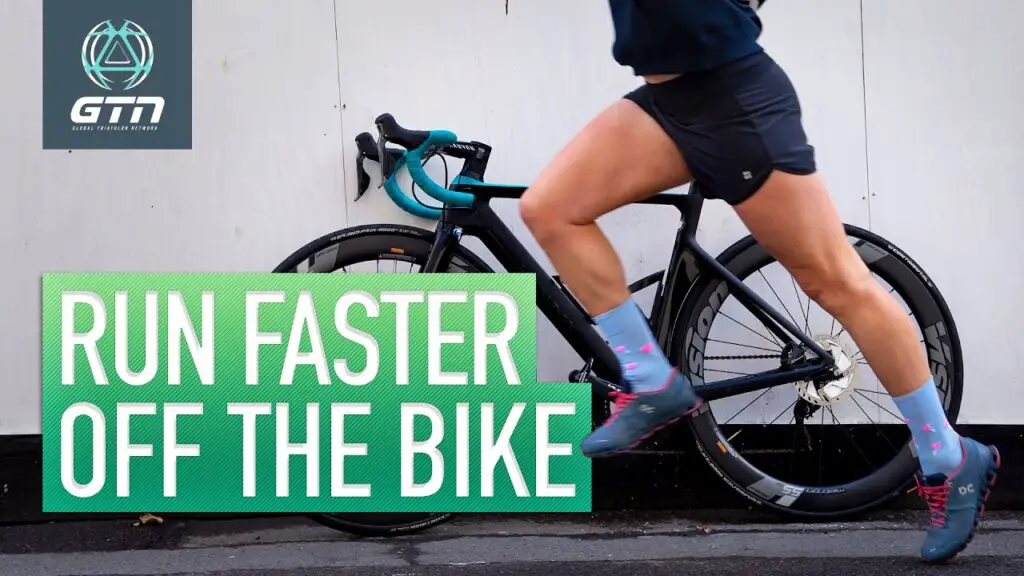Will cycling make me run faster?
Cycling will make you faster as a runner since it makes use of complementary muscles such as the glutes, quads, and core muscles. By working these muscles which complement the muscles used for running you will become a stronger runner.
When you become a stronger runner your efficiency will over time improve making you a faster runner.
On the flip side, it may be argued that riding a bike will not necessarily make you a faster rider. Due to specific patterns of movement and the differences in how muscles are used in running and biking, the argument may be made that cycling does not directly help with running speed.
As such it may be argued that to become a faster runner you need to run more. Still cross-training is one of the most effective ways of improving stamina and endurance and ultimately speed. Therefore, adding cycling to your training regimen can significantly improve your running speed over time.
How Biking can make you run faster
Improving performance as a runner does not mean you have to spend more time on the treadmill or on the road. However, taking out your road bike or stationary bike can help work your muscles differently.

When you take up a new sport you will subject your muscles to a different regimen thus calling for more effort. Over time, combining biking and running will help build stamina and endurance and ultimately lead to an increase in bike speed.
Some of the reasons to incorporate cycling into your running regimen include:
Reduced Risk of Injury
One of the major complications you may face as a runner is the risk of sustaining an injury during your recovery period. When you have been training for long-distance running or sprints your body may not be ready for you to go hard the following day.
However, you cannot just sit around to recover as you stand the risk of losing all your momentum. In such a situation, cycling is the best way of recovering as it is a low-impact activity as compared to running which can be tough on the muscles and joints.
Cycling will reduce stiffness, flush out toxins, improve blood flow, and help you work out discomfort while avoiding potential injuries.
Longer Cardio Workouts
Riding a bike is a low-impact exercise that allows you to work on improving the strength of your heart. Effective runners must have a strong heart to keep blood flowing during a long-distance run. A longer cardio workout allows you to keep your heart strong and work on building up the muscles.
Better Endurance and Muscle Strength
Greater endurance and muscle strength occur naturally when you combine biking with running. Since you can engage in longer cardiovascular workouts on a bicycle, you develop a greater level of endurance over time.
The longer time on the bike helps you develop endurance in running because your heart and muscles can persist in the activity. The increase in muscle strength also improves your speed and endurance during a run because you work on different muscle groups.
The key factor that helps during the run is that the muscle groups in biking complement the muscles you use for running, which improves your performance over time.
Adjusting your cadence

Cadence on a bike transfers easily to your cadence when you run. In both running and biking, you must maintain a steady and consistent motion with a smooth cadence.
In the case of biking, you want to gradually increase the revolutions of both bike petals, or RPMs, to 70-90 RPM for your cadence. Start with easy gear and reach the 90 RPM cadence. After reaching the speed, switch to a higher gear while maintaining the same cadence to intensify your ride.
Biking easily transfers into a run, allowing you to combine both exercises in the same workout routine. Start on the bike and reach the preferred gear at 90 RPM and then start running immediately after getting off the bicycle while maintaining the same steady and smooth cadence in your step.
You will find that it has a positive impact on your speed while also helping you improve your training routine.
Reducing your time running without reducing the impact
The key reason you want to add biking to your training routine is that you get the same results without the long-distance run that harms your knees, ankles, and hips. By transferring your cadence immediately from a bike to a run, you spike up your heart rate and you gain muscle strength.
Heart rate monitors used for exercise such as the wireless heart rate monitoring chest strap are not medical devices, and their accuracy may be affected by a number of factors. They are also not intended to diagnose, treat, cure, or prevent any disease.
The process, which is called a brick workout, allows you to recover quickly after a workout and provides the same benefits as a long run. A brick workout is a process or routine that combines two different exercise disciplines into one cohesive strategy.
It focuses on building muscle memory and neural pathways to help your body regulate pace and effort as you transition in between training sessions.
When Starting a new routine
The biggest challenge of a brick workout combining running and biking is the initial steps to reach your long-term goals for a workout routine. You do not want to start the process too quickly because it may cause injuries.
Instead, you want to start slow and gradually build up to a routine with more biking, a reasonable amount of running, and a long-term plan for adjusting the routine according to the needs of your body. A simple way to start slow is with a 10-minute bike ride followed by a 1-mile run.
When riding a bike, focus on setting a hard or challenging pace. Try to reach 90 RPM and increase the gears if you find the cadence too easy. You can adjust the ratio of biking and running immediately after the first routine to further challenge your capabilities.
If you find a brick workout difficult then try toning down the time until you feel comfortable with the change. You can easily cut the initial workouts in half, such as a 5-minute bike ride and a one-half mile run, to train your body in recognizing and adjusting to the different forms used in biking and running.
Focus on transferring your cadence without harming your form or taking risks with your physical health.
Conclusion
Riding a bike improves your performance as a runner by increasing your endurance, building up your muscles, and reducing the risk of injuries to your legs and hips.
As you complete more brick workouts, you should notice a positive change in your running technique, speed, and ability to keep going during a marathon or long-distance running event.


